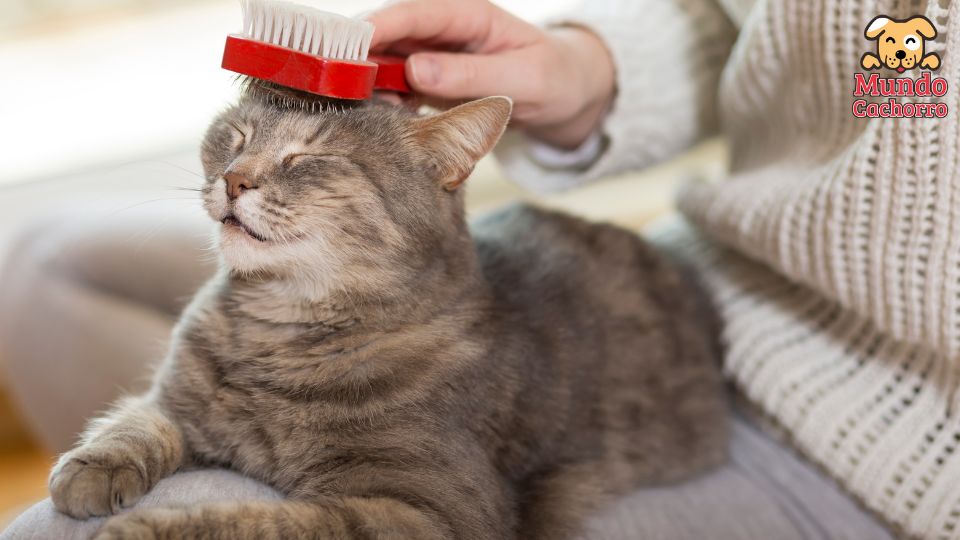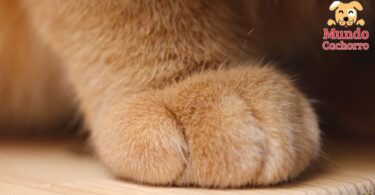Brushing your cat is much more than just a matter of aesthetics. This regular practice contributes to your pet’s overall well-being, helping to keep its coat clean and tangle-free, reducing the amount of hair your cat ingests while grooming and strengthening the bond between the two of you.
Despite the benefits, many cat owners are unaware of the importance of brushing or don’t know how to do it correctly.
In this article, we explain why and how you should brush your cat to keep him healthy and happy.
Indice
Why is it important to brush your cat?
Regular brushing offers numerous health benefits for your cat. The first and most obvious benefit is the control of loose hair. Cats shed their fur naturally, and brushing them regularly helps remove dead hair before it ends up all over the house or, worse, in your cat’s stomach. Brushing also reduces the formation of hairballs. When a cat grooms itself, it inevitably ingests hair, which can accumulate in its digestive tract and form hairballs, causing discomfort and, in some cases, serious health problems.
Brushing your cat minimizes the amount of hair she ingests and, therefore, reduces the risk of these hairballs. Another important benefit is the prevention of tangles and knots in the coat, especially in long-haired cats.
Tangles can become painful for the cat and, if left untreated, can lead to skin irritations or infections.
By keeping your cat’s coat well groomed, your cat will feel more comfortable and you will avoid unnecessary visits to the veterinarian or groomer.
How to choose the right brush
Not all brushes are suitable for all cats. The choice of brush depends on your cat’s coat type.
Short-haired cats and long-haired cats have different needs, so it is essential to select a brush that suits their coat type. For short-haired cats, a rubber brush or fine-toothed comb is usually sufficient.
These brushes help remove loose hair without irritating the skin.
Soft bristle brushes are also a good choice for short-haired cats, as they provide a pleasant massage while removing dead hair. For long-haired cats, it is advisable to use a wire-bristled brush, which penetrates deeper into the coat and untangles tangles without tugging at the hair.
Stainless steel combs with long, spaced teeth are also useful for removing knots without causing discomfort.
If you have a cat with a very dense coat or one that tends to form knots easily, a specialized brush, such as a detangler or an undercoat rake, may be necessary to keep your cat’s coat in good condition.
The correct technique for brushing your cat
Brushing a cat requires patience and gentleness. Not all cats enjoy brushing from the start, so it’s important to create a positive experience.
Here are some tips on how to brush your cat effectively:
- Start gently: If your cat is not used to being brushed, start with short sessions of a few minutes. Use gentle, calm strokes to put your cat at ease. As he gets used to it, you can gradually increase the length of the sessions.
- Follow the direction of the hair: Brush in the direction the hair grows, to avoid causing discomfort or pulling the coat. If you find a knot, work carefully to undo it, using a comb if necessary, and avoid pulling roughly.
- Pay attention to sensitive areas: Some areas, such as the belly, paws or tail, may be more sensitive for your cat. Brush these areas more gently and observe your cat’s reaction. If she shows signs of discomfort, stop and try again later.
- Reward your cat: At the end of each brushing session, reward your cat with a treat or cuddle so that he associates brushing with a positive experience. This will reinforce cooperative behavior and make future sessions easier.
Frequency of brushing according to coat type
The frequency of brushing depends on your cat’s coat type. Short-haired cats tend to need less brushing than long-haired cats, but that doesn’t mean you can skip this routine altogether. In general, short-haired cats should be brushed at least once a week. This is enough to remove loose hair and keep the coat shiny and healthy.
During shedding season, you may need to brush them more frequently to control hair loss. Long-haired cats, on the other hand, need to be brushed more regularly, at least three to four times a week, or even daily, if their coat tends to tangle easily.
This not only keeps their coat in good condition, but also prevents the formation of painful knots and reduces the risk of hairballs.
Signs that your cat needs more brushing
If you notice that your cat is grooming excessively, vomiting hairballs frequently, or has knots in his coat, he probably needs more brushing.
Other signs include the presence of dander, a dull or matted coat, and an increase in the amount of hair you find in the house. Regular brushing not only improves your cat’s appearance, but also gives you the opportunity to check his skin and detect any early problems, such as parasites, wounds or irritations .
This is another reason why brushing should be part of your cat’s grooming routine.
An essential practice that contributes significantly to your health and well-being.
Brushing your cat is an essential practice that contributes significantly to its health and well-being. In addition to keeping their coat clean and tangle-free, regular brushing strengthens the bond between you and your pet, and allows you to stay on top of their overall health.
By choosing the right brush and applying the right technique, you can make brushing an enjoyable experience for both of you, ensuring that your cat not only looks good, but also feels comfortable and happy.
Remember that every cat is unique, and adjusting the brushing routine to their individual needs is the key to keeping their coat in the best possible condition.








